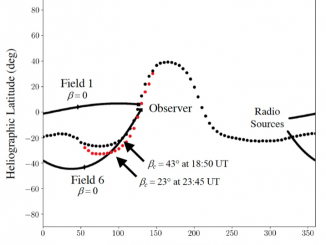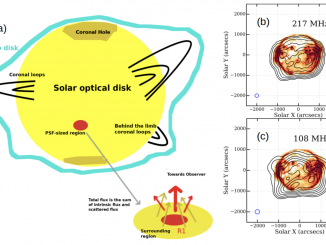VLA Measurements of Faraday Rotation through a Coronal Mass Ejection Using Multiple Lines of Sight by J. E. Kooi et al.*
The Sun is the main source of space weather, and one type of solar event that is critical to space weather is a coronal mass ejection. Coronal mass ejections (CMEs) are large eruptions of magnetized plasma from the Sun that produce energetic particles, which can cause geomagnetic storms on Earth. One method that has proven successful in determining the strength and structure of the coronal magnetic field is Faraday rotation […]


